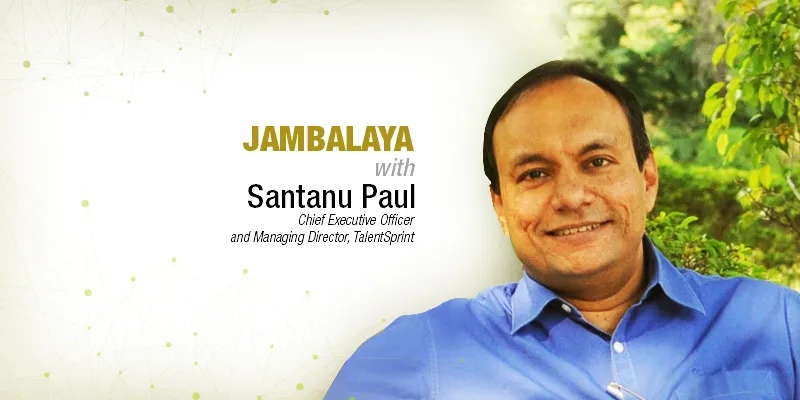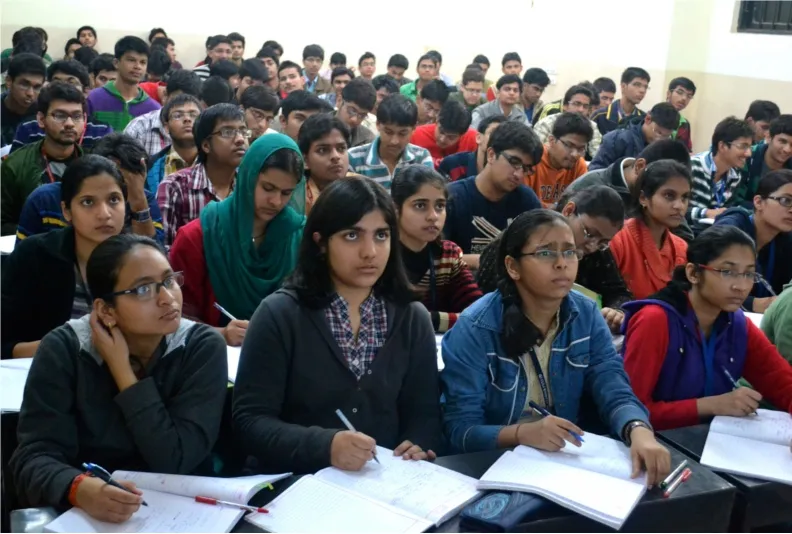[Jambalaya] The tyranny of the classroom
The tyranny of the classroom is that every learner is subjected to the same set of lectures in the same way for the same duration. In the end, a few learners shine, some survive, and the rest are left behind.
This column is for readers who believe powerful ideas give form and flavour to great businesses. Whether you are a startup, an emerging company, or a behemoth in your sector, your next big breakthrough is likely to come in the form of an unexpectedly powerful idea that upends your status quo, disrupts your market, and raises your game to the next level. Ideas matter, more than ever, in every kind of business.

Will the column promote an overarching theme, a specific agenda, a mission or a cause? Not really. Instead, we hope to coax metaphorical recipes out of random themes such as purpose and prosperity, humans and machines, leadership and entrepreneurship; and serve them up with side orders from interesting books on business, science, and art. The aim is to connect these themes to contemporary happenings and make sense of them.
Some definitions are in order. A jambalaya (pronounced: jumble-aayaa) is a medley of rice, vegetables, spices and protein that tastes divine because the whole is yummier than each of its parts. As in a khichdi or a biryani, the pursuit of perfection requires the jambalaya chef to follow some rules and break others. Intuition is given free rein to rule over ingredients. The perfect jambalaya is a conspiracy between order and chaos. The right brain whispering to the left brain to break out of the recipe and flirt with change.
Albert Einstein famously quipped that insanity is the act of doing the same thing over and over and expecting different results. By that yardstick, the current belief in national policy circles that brick-and-mortar training centres are a panacea for India’s deepening youth skill crisis can be considered insane.
We know our higher education system thrives on a steady diet of uninspiring classroom lectures. We also know most of our degree dispensing colleges generate millions of unemployableble graduates. And yet, we are seeking more and more conventional classroom intervention to address the skill gaps plaguing our youth. Hope, as they say, is not a good strategy.
The disorienting aspects of our demographic dividend are volume and velocity. To grasp its import, let us visualise one crore fresh graduates coming out of Indian colleges each year, and then factor in that 90 percent of them need skill education before employers are even willing to talk to them.

Can we deploy one lakh classrooms? Where are the one lakh industrial-grade trainers of high quality? Even if we knew, how much would they cost anyway? Is it possible to provide personalised attention to the skill gaps of each young job seeker, working through them one after another, and completing the mammoth task before the tsunami of next year’s graduates hits the labour market? It is easy to infer we are staring down the proverbial barrel.
Conventional classrooms, by emphasising fixed duration over learning effectiveness, resign themselves to variable outcomes. The tyranny of the classroom is that every learner is subjected to the same set of lectures in the same way for the same duration. In the end, a few learners shine, some survive, and the rest are left behind.
Fixed duration later, the classroom model moves on, with not a thought spared for those left behind. This is how we end up with 10 percent employability in our graduates after a decade and half of formal education. Repeating the same ineffectual script in the realm of skill education will not produce different results.
Contrast this with adaptive learning, its polar opposite. Adaptive learning views attainment of competency as its central goal, the duration of learning being largely irrelevant. It recognises every learner as unique and creates a personalised and optimised learning pathway for each of them. Consider the scenario of Farzana and Manish, both aged 21, who hope to become science teachers. An adaptive system would start them off with a well-designed competency assessment test. The test might reveal that Farzana is 80 percent job ready, while Manish lags at 40 percent. At this point, Farzana would be well advised to close her gap in the area of pedagogy (i.e. how to teach science better), while Manish would need intense remedial classes to boost his subject matter expertise (i.e. how to teach science).
Since Farzana is close to her competency target, an adaptive system may simply direct her to watch ten curated short videos on pedagogical techniques, then administer another test on that topic to see if she clears it, and then proceed to declare her job ready in less than a week. On the other hand, given the extent of Manish’s troubles, the system may prescribe him a set of 20 video lessons, 10 mentoring sessions, and five exercises over the next three months. In the end there would be a comprehensive competency test for Manish to write and clear. When all is done, both Farzana and Manish would have attained the right competency level, but they would have followed distinctly different learning paths tailored to their individual selves.
Brick-and-mortar training centres are not the place where one can implement adaptive learning effectively. After all, conventional classrooms encourage one-size-fits-all instruction, squeezing every learner into a strait jacket and proceeding to stamp out all differentiation. No matter how much we revere stalwart classroom instructors, and expect each classroom to have one, that rare tribe is diminishing by the day. Most young learners of today will never experience anything resembling teaching excellence in their own classrooms. In other words, the chalk-and-talk format is refusing to scale up to the unique opportunities and severe challenges presented by a very large and diverse population of learners. Most classrooms in the country now offer the antithesis of high quality instruction. Look no further than our formal education system for corroborating evidence.
As our nation’s youth aspire to give wings to their dreams through skill education, to forget the tyranny of the classroom could be fatal indeed. In the words of the Spanish philosopher George Santayana, those who cannot remember the past are condemned to repeat it!
(This article first appeared in The Hindu)
(Disclaimer: The views and opinions expressed in this article are those of the author and do not necessarily reflect the views of YourStory.)


![[Jambalaya] The tyranny of the classroom](https://images.yourstory.com/cs/wordpress/2015/01/bansal.jpg?mode=crop&crop=faces&ar=16%3A9&format=auto&w=1920&q=75)




